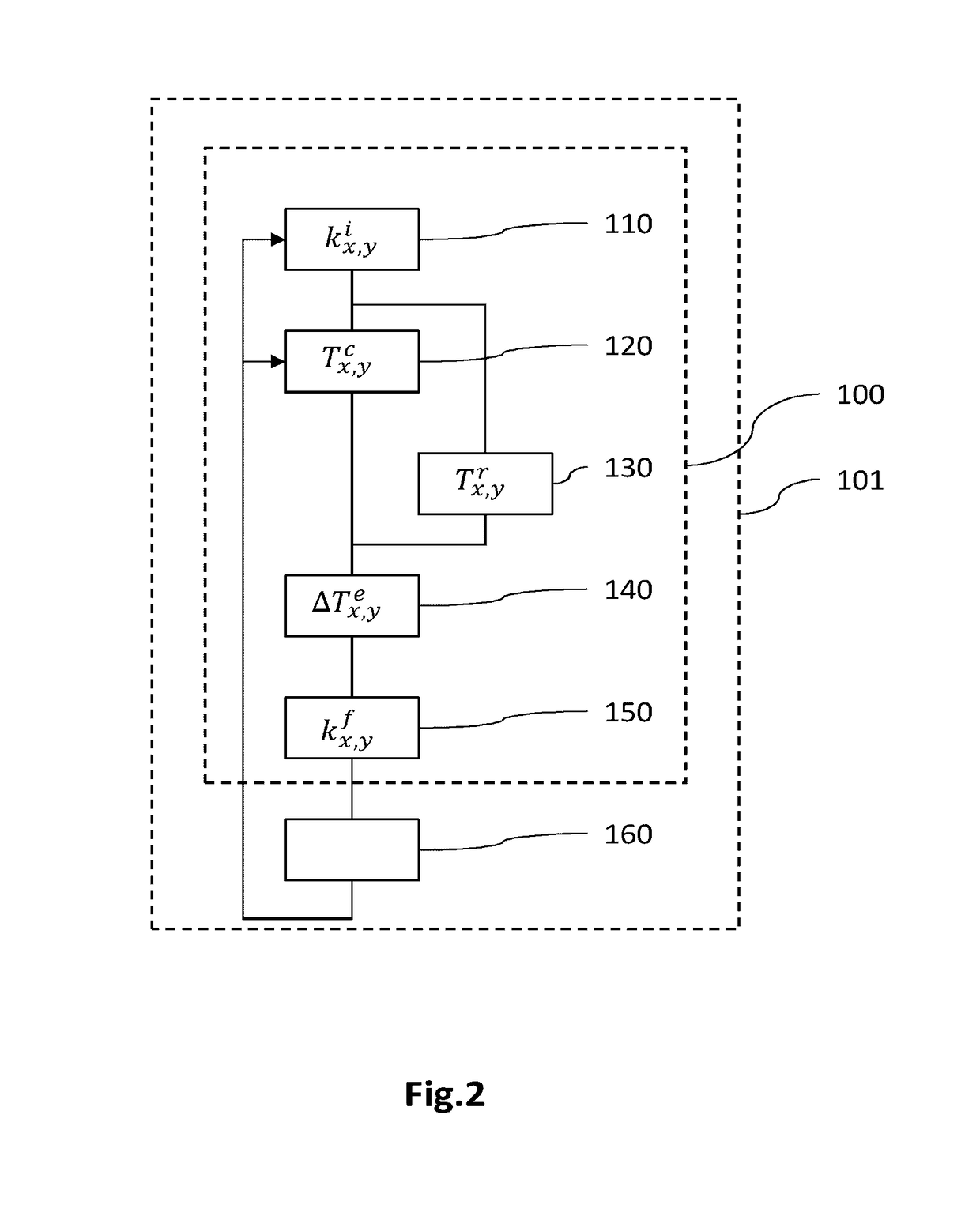Method for determining a spatial distribution of the permeability of an electrode of an electrochemical cell
- Summary
- Abstract
- Description
- Claims
- Application Information
AI Technical Summary
Benefits of technology
Problems solved by technology
Method used
Image
Examples
first embodiment
[0077]FIG. 2 is a flowchart of a method for determining the spatial distribution of the parameter of interest representative of the permeability of an electrode, according to a In this example, the parameter of interest is the permeability k of a diffusion layer of an electrode of the cell, for example the cathodic diffusion layer, the value kx,y of which has a direct influence on the local electrical current density Ix,y exchanged locally during the electrochemical reaction and therefore on the local produced heat flux Qx,y.
[0078]Generally, according to this first embodiment, an optimized spatial distribution kx,yf of the permeability k is determined from an estimation of the spatial distribution ΔTx,ye of a difference ΔTe between an effective temperature Tr of the cell in operation—in which cell the permeability is spatially distributed with a given initial distribution—and a preset set-point temperature Tc. It is then possible to modify the permeability k of the diffusion layer ...
second embodiment
[0088]FIG. 3 is a flowchart of a method for determining the spatial distribution of a parameter of interest representative of the permeability of a diffusion layer of at least one electrode of an electrochemical cell, according to a In this example, the parameter of interest is the permeability k of the diffusion layer, here the cathode, the value of which has a direct influence on the electrical current density produced locally during the electrochemical reaction.
[0089]Generally, according to this second embodiment, the spatial distribution kx,yf of the permeability k is determined from the estimation of the spatial distribution of the production of heat necessary to obtain the spatial distribution of a set-point temperature, while taking into account the spatial distribution of a thermal quantity representative of the effective heat removal in the cell. It is then possible to modify the initial distribution of the permeability of the diffusion layer so that it has an optimized sp...
PUM
 Login to View More
Login to View More Abstract
Description
Claims
Application Information
 Login to View More
Login to View More - R&D
- Intellectual Property
- Life Sciences
- Materials
- Tech Scout
- Unparalleled Data Quality
- Higher Quality Content
- 60% Fewer Hallucinations
Browse by: Latest US Patents, China's latest patents, Technical Efficacy Thesaurus, Application Domain, Technology Topic, Popular Technical Reports.
© 2025 PatSnap. All rights reserved.Legal|Privacy policy|Modern Slavery Act Transparency Statement|Sitemap|About US| Contact US: help@patsnap.com



